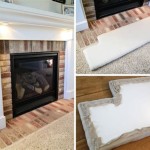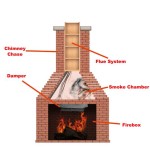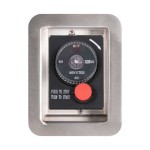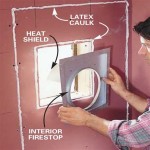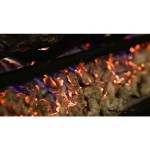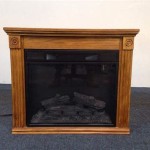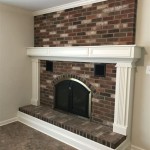Mounting a television above a fireplace is a popular design choice, offering a visually appealing focal point in a living space. This installation, however, presents several challenges, particularly concerning the safe and aesthetically pleasing integration of electrical wiring. This article will detail the considerations and steps involved in mounting a television over a fireplace, with a specific focus on addressing the complexities of electrical wiring to ensure both functionality and safety.
Mounting A TV Over A Fireplace: Wiring Considerations and Procedures
Before undertaking this project, a thorough assessment of the fireplace, wall structure, and existing electrical infrastructure is crucial. The type of fireplace (wood-burning, gas, or electric), wall material (drywall, brick, or stone), and the presence of existing electrical outlets or conduits will significantly impact the installation process. Failing to properly assess these elements can lead to structural damage, electrical hazards, or aesthetic compromises.
Assessing the Fireplace and Wall Structure
The heat generated by a fireplace is a primary concern when mounting a television above it. Excessive heat can damage the television's internal components, shorten its lifespan, and potentially void the warranty. Therefore, it is imperative to measure the temperature above the fireplace during typical use. A general guideline suggests that the area above the mantel should not exceed 100 degrees Fahrenheit (38 degrees Celsius). If the temperature exceeds this threshold, alternative mounting locations should be considered, or a deeper mantel providing better heat shielding may be necessary.
The wall material dictates the type of mounting hardware required. Drywall is relatively straightforward, requiring wall anchors or, ideally, attachment to wall studs. Brick or stone walls necessitate specialized masonry drills and anchors capable of supporting the television's weight. Furthermore, the structural integrity of the wall must be verified to ensure it can bear both the television and the mounting bracket without risk of collapse or damage.
Existing electrical infrastructure plays a critical role in determining the complexity of the wiring process. If an electrical outlet is already present near the desired mounting location, the installation becomes more manageable. However, if a new outlet is required, a qualified electrician should be consulted to ensure compliance with local electrical codes and safe wiring practices. Attempting to install new electrical wiring without proper knowledge and qualifications can result in serious injury or property damage.
Planning the Wiring Configuration
The goal of concealing television wiring is to maintain a clean and uncluttered aesthetic. Exposed cables detract from the overall appearance and can pose a tripping hazard. Several methods can be employed to achieve concealed wiring, each with its own advantages and disadvantages.
One common approach is to run the cables behind the wall. This involves creating an opening near the television mounting location and another near the floor, typically behind an entertainment center or near an existing outlet. Cables are then routed through the wall cavity, connecting the television to the power source and any other devices, such as cable boxes or gaming consoles. This method often requires cutting and patching drywall , which can be time-consuming and require painting for a seamless finish.
Another option is to use cable management systems, such as cable raceways or cord covers. These systems provide a channel for the cables to run along the wall, concealing them from view. Cable raceways are available in various sizes and colors to blend in with the wall decor. While they are not entirely invisible, they offer a relatively easy and affordable way to manage wiring without requiring extensive wall modifications.
An important consideration is the type of cables needed. In addition to the power cord, HDMI cables, coaxial cables, and potentially Ethernet cables may be required, depending on the desired functionality. High-quality HDMI cables are recommended to ensure optimal picture and sound quality, especially for high-resolution displays. Furthermore, it is advisable to use cables that are long enough to accommodate future adjustments or rearrangements without requiring replacement.
Wiring practices must adhere to all applicable electrical codes and regulations. This includes using appropriately rated cables, properly grounding all electrical components, and ensuring that all connections are secure and insulated. If any doubts exist regarding the safety or compliance of the wiring configuration, a qualified electrician should be consulted. Improper wiring can lead to electrical shocks, fires, and other hazards.
Implementing Safe Wiring Practices
Safety is paramount when dealing with electrical wiring. Before commencing any electrical work, it is essential to disconnect the power supply to the circuit being worked on. This can be accomplished by switching off the corresponding circuit breaker at the main electrical panel. It is also advisable to use a voltage tester to verify that the power is indeed disconnected before touching any wires.
When running cables through the wall, precautions must be taken to avoid damaging existing wiring or plumbing. A stud finder can be used to locate wall studs and avoid drilling or cutting into them. If there is any uncertainty about the location of hidden utilities, a professional should be consulted. Damage to wiring or plumbing can result in costly repairs and potentially dangerous situations.
All electrical connections must be made using appropriate connectors and tools. Wire strippers should be used to remove insulation from the wires without damaging the conductors. Wire nuts or crimp connectors should be used to join wires together, ensuring a secure and insulated connection. Electrical tape can be used to further insulate connections and prevent accidental shorts.
When installing a new electrical outlet, it is crucial to follow the manufacturer's instructions carefully. The outlet should be properly grounded to prevent electrical shocks. The wiring should be connected to the correct terminals, with the hot wire (usually black) connected to the brass terminal, the neutral wire (usually white) connected to the silver terminal, and the ground wire (usually green or bare) connected to the green terminal. Improper wiring can result in a reversed polarity, which can damage electrical devices and create a safety hazard.
After completing the wiring, it is essential to test the outlet to ensure that it is functioning properly. A circuit tester can be used to verify that the outlet is properly wired and grounded. If any problems are detected, the wiring should be inspected and corrected before connecting any devices.
Finally, it is important to document the wiring configuration for future reference. This can include taking photographs of the wiring before closing up the wall, as well as labeling the cables and outlets. This documentation can be invaluable for troubleshooting problems or making future modifications to the electrical system.
In conclusion, mounting a television over a fireplace involves careful planning and execution, particularly regarding electrical wiring. By thoroughly assessing the fireplace and wall structure, planning the wiring configuration, and implementing safe wiring practices, it is possible to achieve a visually appealing and safe installation that enhances the functionality and aesthetics of the living space. While this article provides a comprehensive overview of the process, it is always advisable to consult with qualified professionals for any aspects of the project that are beyond one's personal expertise.

Hiding Wires On Wall Mounted Tv Above Fireplace Extension Kit Powerbridge

Tv Wall Mount Installation With Wire Concealment Over Fireplace

Hide Cords Of A Tv Mounted Over Fireplace Powerbridge

How To Hide Tv Wires Above A Fireplace When You Can T Go Through The Wall Homes I Have Made

How To Mount A Tv Over Brick Fireplace And Hide The Wires Designing Vibes Interior Design Diy Lifestyle

Tv Wall Mount Installation With Wire Concealment Over Fireplace

How To Hide Tv Wires Above A Fireplace When You Can T Go Through The Wall Homes I Have Made

How To Hang A Tv Over Fireplace

How Should I Run Wiring For My Above Fireplace Mounted Tv Mount

Can I Mount My Tv Above The Fireplace
Related Posts

